My Canadian Rockies class and I hiked into the Consolation Lakes area from Moraine Lake, a spot in Banff National Park near Lake Louise.
At Consolation Lakes, we were greeted by glacial spalling in the distance (a boom and then the roar of ice chunks cascading down the cliffs) and a lack of grizzly bears. We had lunch, and then explored the talus. I found something odd there…
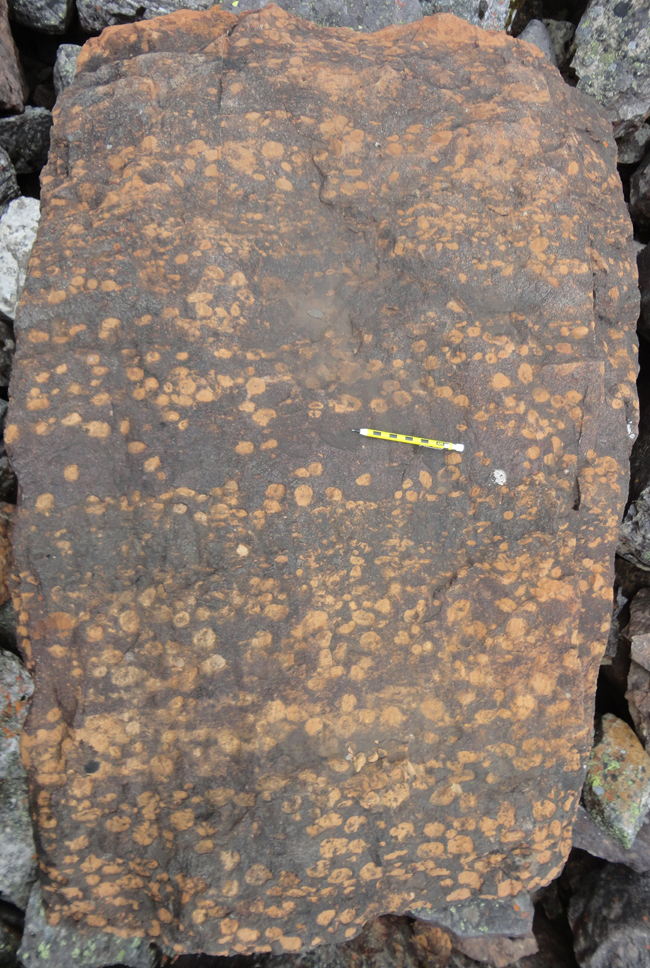
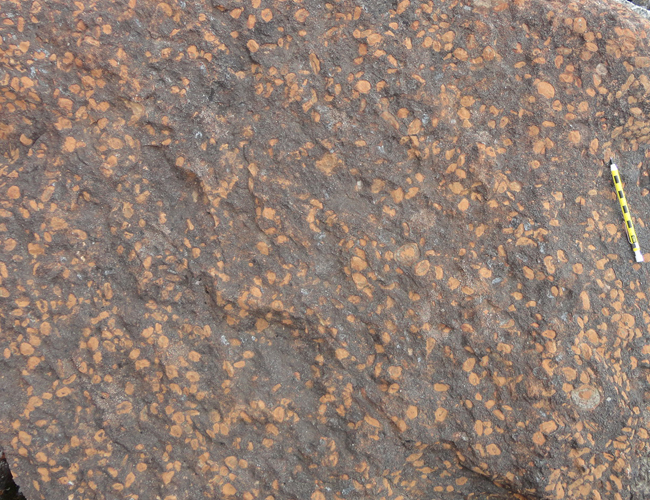
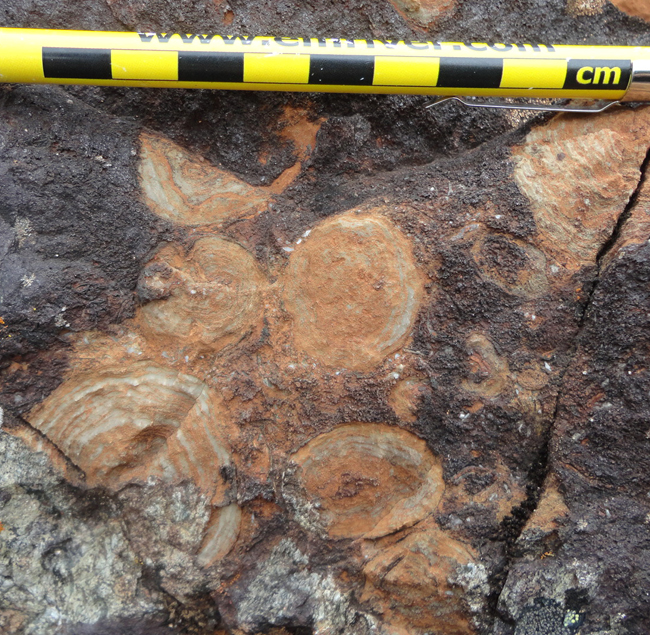
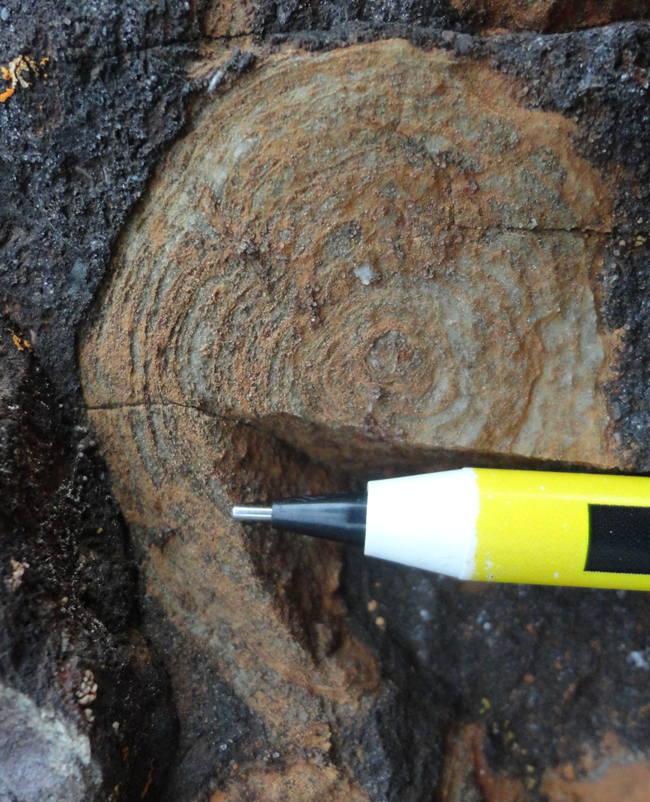
So far, they appear to be oolitic (or pisolitic / oncolitic, based on their 2 to 3 cm diameters). But there were other structures in the same rock that had an internal structure that appeared to be radially layered with texture, a sort of “thrombolitic” (branching, clotted) texture. My brain’s pattern-recognition center thought that they resembled sections through a coelomate animal:
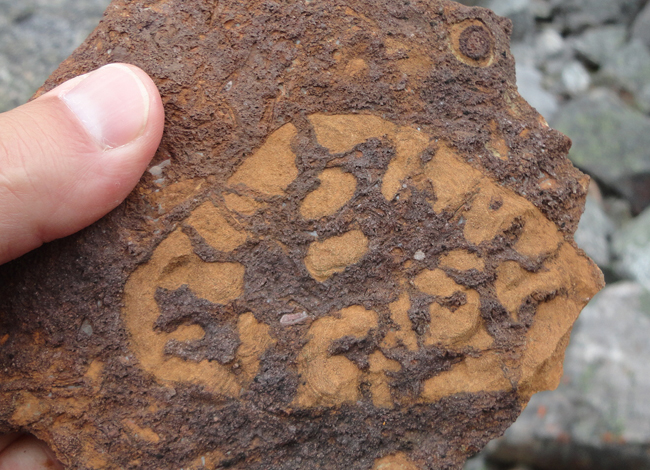
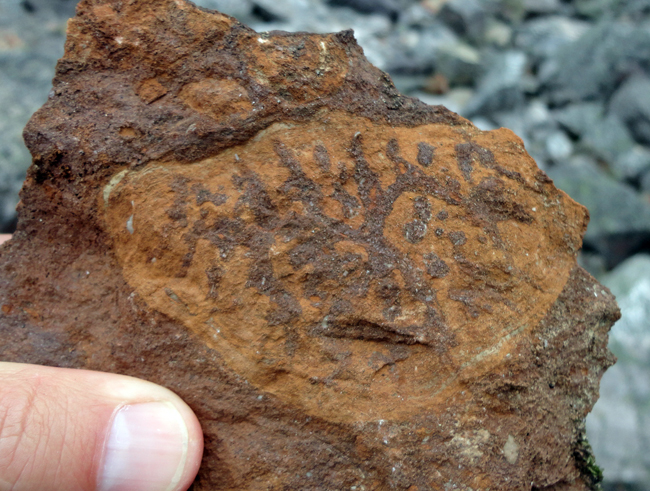
Weird, right? Here are two more:
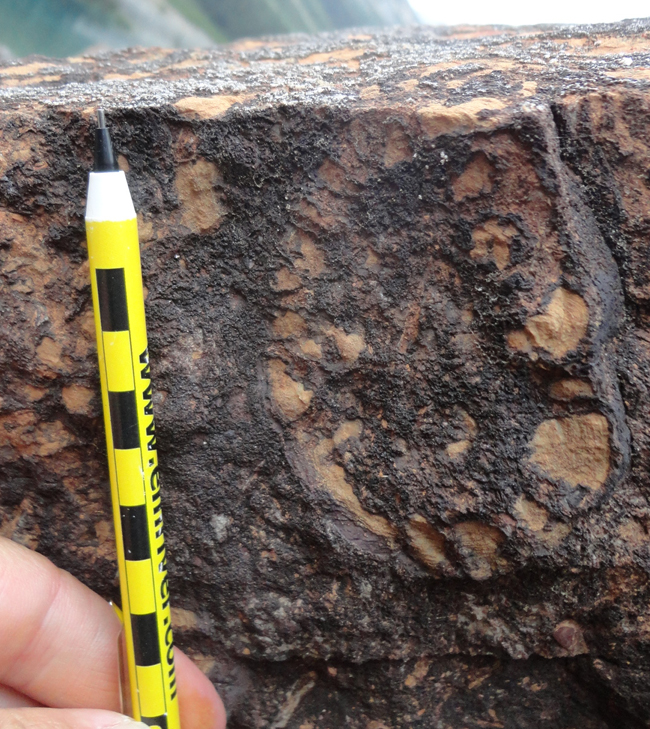
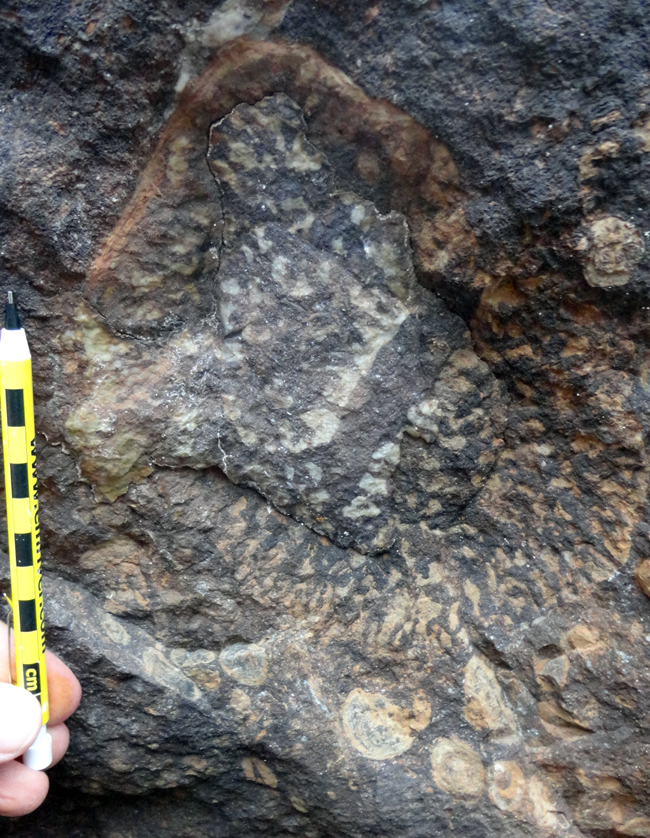
In this last one, note the “oncolites” looking like gobstoppers in a row (lower right) next to this monster spongey thing with the radiating branching tubules and the dark central “heart”…
Does anyone have any idea what these things are?
Are they different expressions of the same basic phenomenon? Are we looking at mega-ooids plus something else? (…and if so, what?)
My undying gratitude in exchange for a coherent and satisfying answer…

why not sponges? or maybe coral polyps (just some brainstorming)
http://goo.gl/AXtoz
Why not?
Callan–
The rocks where you guys were at Consolation Lakes can only be Lower or Middle Cambrian. I strongly suspect we’re looking at the Peyto Formation, which is a carbonate that forms the top of the Gog Group (Lower Cambrian, Bonnia-Olenellus trilobite zone). Rasetti (1951, p. 56) describes a particular bed in his “Peyto Limestone Member”, thus:
“A characteristic bed of the Peyto limestone that is present in many
sections is a massive sandstone, sandy limestone or dolomite, generally
weathering dark tan, including small, spherical or ovoidal concretions
of fine-grained limestone or dolomite approximately an inch in diame-
ter. These concretions resemble algal growths, but are more likely to
be inorganic. This bed was observed in the Ptarmigan Peak, Mount
Victoria, Eiffel Peak, Mount Temple, Pinnacle Mountain, Mount
Schaffer, and Mount Odaray sections. Since no other bed of similar
lithology has ever been observed in the Cambrian of the area, the con-
cretionary layer, when present, is an excellent horizon marker.”
The Eiffel Peak & Mount Temple sections are very close to where you were.
Having said all this, I’m not sure what your objects are, but given the age and environment I’d guess they’re a calcareous algae or sponge of some sort. If I’m able to find any more info, I’ll let you know. The Aitken paper may have more info, but I don’t have it at hand, and it’s not available online.
References:
Aitken, J.D. 1997. Stratigraphy of the Middle Cambrian platformal succession, southern Canadian Rocky Mountains. Geological Survey of Canada, Bulletin 398, 322 pp. (Aitken raises Rasetti’s “Peyto limestone” to formation status in this paper).
Rasetti, F. 1951. Middle Cambrian stratigraphy and faunas of the Canadian Rocky Mountains. Smithsonian Miscellaneous Collections, 116(5), p. 56. (you can download this as a PDF from the Smithsonian’s website).
I wrote to Ben Gadd about this, and he said:
Did he take a stab at identifying the weird sponge/algae things?
That’s the whole e-mail. So, no.
How do you use term oncolite/oncoide in USA? We use term oncoide for a fossilised oncoide and term oncolite for describing a oncoide bearing rock (as in oncolite limestone)
Hi Blaž, I’m not sure of the finer levels of distinction. My geology dictionary is in the office at work; can’t check right now.